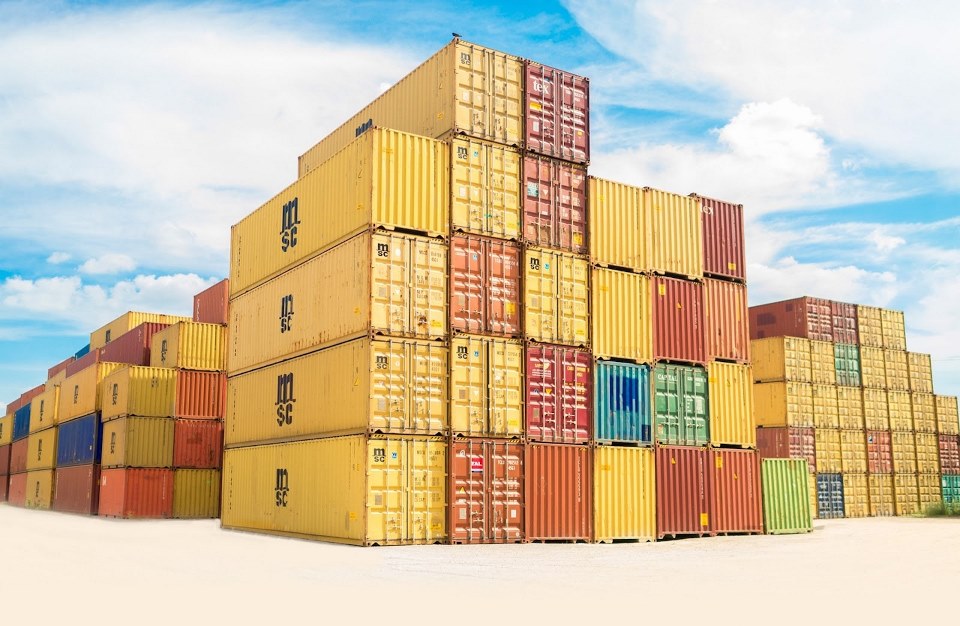How Does Freight Differ from Small Package Shipping?

The logistics sector is very varied, and many organizations and consumers rely on this segment for their needs. Consequently, numerous services are necessary for the efficient operation of this industry. This market has many moving parts, and it can be challenging to tell various kinds of service delivery apart sometimes.
As a result, it’s easy to overlook some of the fundamental terms that may prove puzzling to inexperienced shippers. So, we’ll answer a frequently asked question: What’s the difference between freight shipping and small parcel shipping (commonly expressed as “What is Freight?”)?
This article will briefly compare freight services and small package delivery. The two services are in high demand, but distinct categories of businesses employ them.
What is Freight Shipping?

Freight refers to shipments that are significantly larger and more complex to organize and transport. There are a lot of different terminologies in freight transportation (too many for this post). However, the key idea is that the quantities and sizes are too large to dump into the cargo compartment of a UPS truck and dispatch to your destination. Some other features are:
- In the freight industry, handling either a large number of little goods or a limited number of bulky things is common.
- Pallets and containers, rather than single boxes, are commonly used to transport goods.
- If you encounter jargon like FTL, LTL, LCL, or CL, you’re probably dealing with freight instead of small parcels.
A small parcel shipment is significantly simpler to plan and manage than a freight shipment. Calculating a freight price depends on the dimensions and weight of your package and your choice of transport method (truck, ocean, or air). The freight shipping arrangements and planning usually fall to a freight forwarder that works on clients’ behalf.
Calculating Freight Shipping
Following the selection of the freight, shipments are measured for the amount of room they will require in a shipping container. Full truckload packages must stay under the weight limits set by local laws, usually between 35,000 and 45,000 pounds.
LTL shipments fill only part of the truck’s bed and fall below 10,000 pounds. Even though they don’t occupy an entire truck, partial truckload shipments are more manageable than LTL shipments because of their size.
Millions of small package shipments are transported and received daily, compared to only a few freight packages. Because freight shipping depends on supply and demand rather than a system of repetitive everyday directions, its potential to anticipate arrival is less accurate than that of small package shipping, which relies on a network of daily routes.
What Exactly is Small Package Delivery?
When a business sends out (wait for it) smaller parcels, they commonly employ tiny parcel shipping since they need a consistent and manageable solution. Other traits are as follows:
- The dimensions of the shipment are relatively tiny, making it convenient to pick up.
- It usually weighs less than 150 pounds.
- It is typically handled by a large logistics company like FedEx, UPS, or the United States Postal Service (USPS).
The primary use of small parcel shipment is by companies sending their finished, purchased goods to clients. For example, an online store for a dog food company might get an order for just one dog food. After selecting the desired product from stock, the business will package and send the product via USPS to the buyer.
This is small parcel delivery. Similarly, when you visit the FedEx office to ship your dad’s birthday card, it’s a small package shipment.
Calculating Small Package Shipping

When they shop online, 62% of consumers want their purchases delivered for free in fewer than three business days. So, the cost of sending small packages can significantly affect how much a business makes.
Businesses can determine how much it will cost to ship their products to customers by using the online price calculators that most shipping firms like USPS provide.
Due to the nature of moving individual products, parcel transportation is typically more adaptable and accurate in its delivery than freight. The capacity of a parcel delivery driver to quicken package delivery by loading up the truck with extra goods is a significant distinction between parcel and freight.
Due to the sheer volume of goods transported by freight, even one extra pallet can fill up a truck or container to capacity, disrupting other shipments by several days.
Who & When to Use Freight vs. Shipping Parcel
When Should You Use Freight Shipping?

Freight shipment isn’t necessary if you ship infrequently or in tiny quantities or if the items seldom go to the same place. However, freight shipping is the most cost-effective option if your business regularly sends large amounts of goods to a single supplier or consumer.
Remember that disruptions are more likely to occur with freight shipments because they must transit through railway or container ship transportation and massive processing facilities. This is why manufacturing and other middle-tier suppliers are the only ones who typically use freight shipping.
When Should You Use Parcel Shipping?
However, parcel shipping is typically used by retailers with fewer than 100 packages to send. These companies won’t be able to pool together their shipments to save money by shipping freight instead of parcels.
Parcel shipping is ideal if your shipments are towards the final stage of the distribution chain or go straight to the customer.
Nonetheless, it’s not entirely impossible to have a unique situation with gray areas between these two shipment options. For shipments weighing more than 70 pounds but less than 150 pounds, the ultimate choice depends on two criteria, namely:
- Volume
- Destination
Small freight shipping may be an option if you have a substantial quantity of the same item heading to the same location. However, if your shipments are often light truckload (LTL), you should reconsider shipping services, mainly if each parcel tends to be smaller.
Decided Yet?
In summary, freight is typically used for big loads and is more complicated to manage than small parcel deliveries, which are your standard, everyday package shipments. Whether anything is classified as Freight or Small Parcel depends on its dimensions, weight, and quantity. Thus, it’s usually not a “or” situation. Most small parcel services (such as UPS) have definite size limits for items they won’t transport.
Knowing the difference between package and freight, you can confidently choose which shipping and fulfillment solutions to work with, whether to send large shipments through freight transportation services or place a small order for products with a B2B courier. Whatever you choose, Shipcarte can help!

